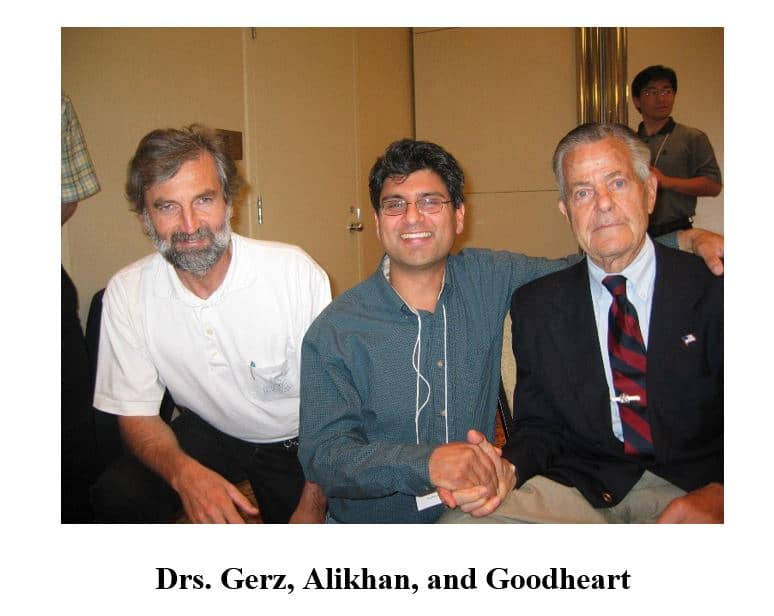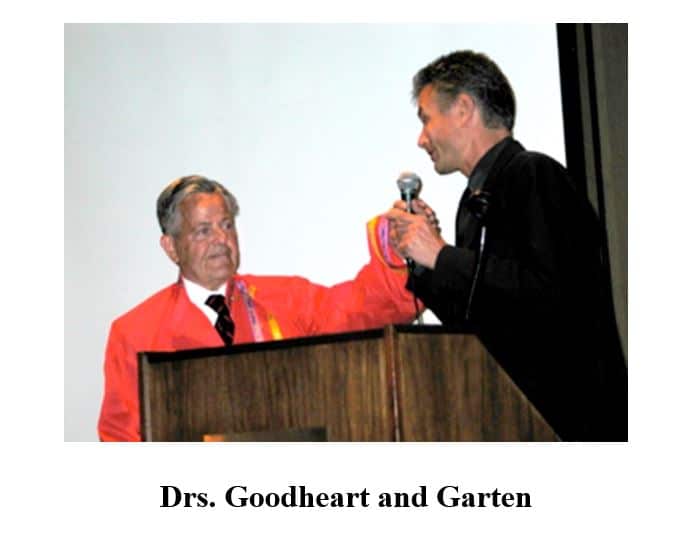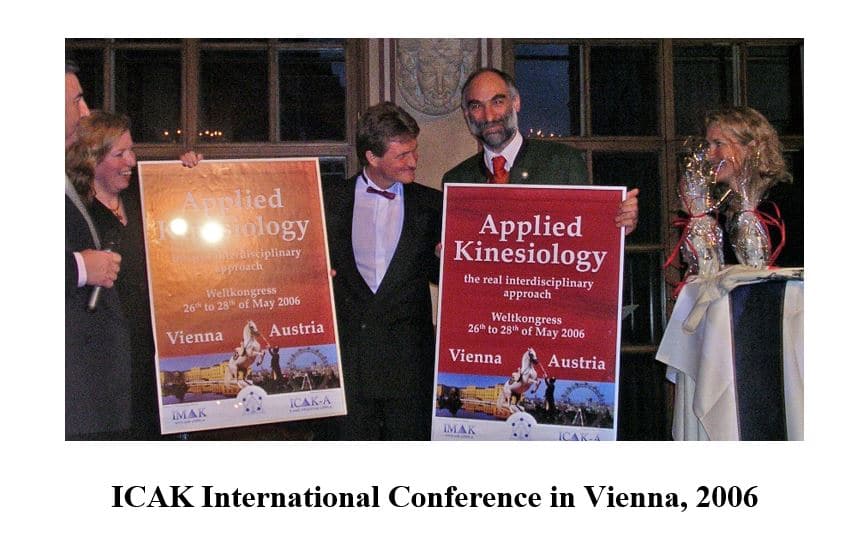…article continued:
Applied Kinesiology in Germany

Beginning in 1984 Wolfgang Gerz (MD), who had been a World Champion in the Finn Dinghy Sailing class, had participated in the Olympic competitions as a competitor. He had problems with his low back during this event and was treated by a chiropractor who used applied kinesiology. He immediately became interested in what she was doing and bought one of the seminar handouts by Dr. David Leaf.
In 1985 he started his “Chirotherapy” training in Germany, a post-graduate training in manual medicine for medical doctors. At the training table he met Hans Garten, MD, who was doing his specialization in anesthesiology and, unhappy with the diagnostic tools this discipline offered for pain control, decided to undertake the same training. He had been a trained acupuncturist since 1981 and immediately became inspired by the opportunities applied kinesiology offered.
In 1985 Dr. Wolfgang Gerz organized the first 50-hours training in applied kinesiology in Munich, Germany, which were taught by the first European diplomate at that time, Dr. Richard Meldener. The second 50 hours were taught by the second diplomate in Europe, Dr. Christopher Astill-Smith, in 1988, who taught another two series of 100 hours organized by Hans Garten in Hamburg.
In 1991 at the ICAK European Meeting in Copenhagen, Hans Garten and Wolfgang Gerz passed the diplomate exam, being the first medical doctors outside the United States to take this exam. From then on, they started to teach medical doctors, dentists, Heilpraktikers, and physiotherapists in Germany, which seemed to be logical, as there were only a handful of chiropractors in Germany.
In 1992 they founded the “Deutsche Gesellschaft für Applied Kinesiology” (DGAK), whose first Chairman was Gerz and had medical doctors, dentists, physiotherapists, and Heilpraktikers. Heilpraktikers are a professional group in Germany, which has no defined education but who, after an exam before a medical board, is furnished a license to diagnose and is similar to the naturopathic profession in Germany. Unknowingly DGAK had the same abbreviation as the association that had been founded by Heilpraktikers and laypeople in Freiburg, Germany, who had actually taken a “Touch for Health” training and called themselves the “Deutsche Gesellschaft für Angewandte Kinesiologie” (DGAK). The Freiburg group forced the medical group to change its name threatening it with a lawsuit, which was the origin of the German Chapter of ICAK: ICAK-D.
In 1993 the “Internationale Ärztegesellschaft für Applied Kinesiology” (IÄAK) was founded in Klagenfurt, Austria, which later changed its name to International Medical Society of Applied Kinesiology (IMAK). In 1993 the Austrian Chapter was founded (ICAK-A), with members who are medical doctors, dentists, and physiotherapists.
In 1996 Garten founded the “Deutsche Ärztegesellschaft für Applied Kinesiology” (German Medical Association of Applied Kinesiology, DÄGAK) together with Jeff Farkas, an American chiropractor, working in Germany. This became the second German Chapter, which had medical doctors and dentists as members as well as physiotherapists as associate members. The structure copied that of the manual medicine associations in Germany with the intent to bridge the gap between applied kinesiology and established manual medicine. DÄGAK ever since its foundation has sought to promote applied kinesiology as a scientifically based technique of manual medicine. The pre-requisite for acceptance of a technique should thereby be at least a credible model within the parameters of established science. The majority of this growth and activity was done with Dr. Goodheart’s blessing.

The three German-speaking chapters grew relatively fast as the acceptance of complementary and alternative healthcare traditionally is quite important among both patients and health professionals in Germany, which after all is the country of origin of such methods as homeopathy (Hahnemann), neural therapy (Hunecke), and electro acupuncture (Voll).
Helpful in this process has been the publication of the first textbook on Applied Kinesiology in German by Gerz in 1996, with a second edition in 2000,16 a series of educational videos by Hans Garten in 1996, and another two textbooks in 2004 (now in its second edition) and 2007.17-19 There are textbooks on AK and acupuncture,20 and AK and cranial osteopathy, as well as three handbooks on manual muscle testing by Garten, Gerz, and Ramsak.21-25
In November 2004, the IMAK (Chairman Harald Stossier) obtained accreditation of the Diploma of Applied Kinesiology from the Austrian Medical Chamber for the Austrian Chapter, which has an important status in the European Union according to its legislation. It is the first and only certificate in applied kinesiology awarded by a medical board in the world.
After Drs. Smith and Meldener, many diplomates have taught AK in Belgium and Holland: Wolfgang Gerz, Hans Garten, Jeff Farkas, Joseph Shafer, Clive Lindley-Jones, Tracy Gates, Dieter Becker, Ulrich Angermeier, Wally Schmitt, Phil Maffetone, Laurent Picard, Richard Belli and Steve Gangemi. Applied kinesiology chiropractic technique in Europe is now being used and taught by chiropractors, osteopaths, medical doctors, physiotherapists, dentists, and other allied professionals.

Since 2008 DÄGAK and ICAK-A (under the roof of IMAK) developed their uniform teaching curricula with standardized handouts, which are compulsory for every teaching diplomate. Diplomates who are IMAK lecturers exclusively teach the material that they have a specialized proficiency in (chiropractic, osteopathy, orthomolecular medicine, acupuncture, etc.).
These Chapters published the MJAK (Medical Journal of Applied Kinesiology), the abstracts of which can be read in English language. The full text articles in German can be ordered at www.DAEGAK.de.





